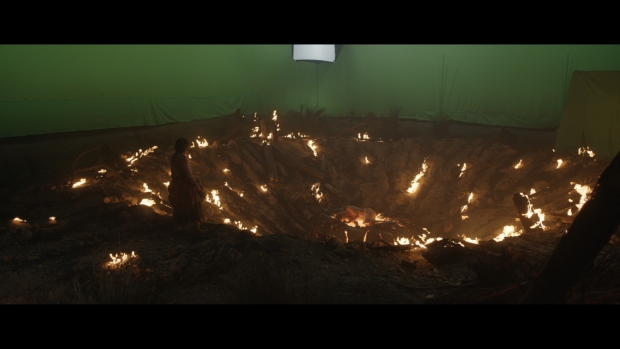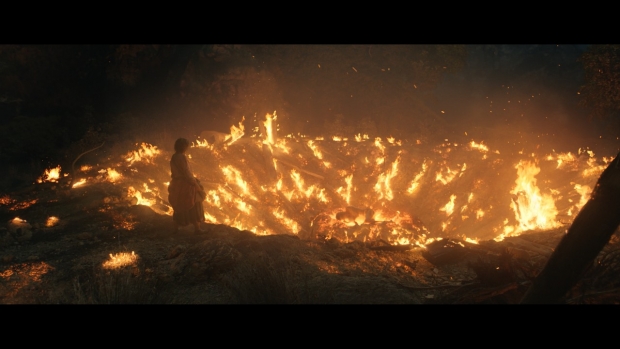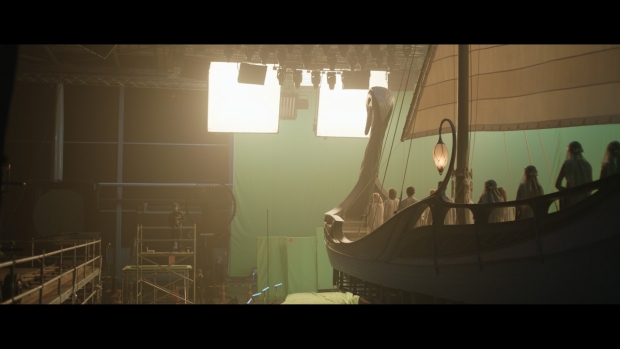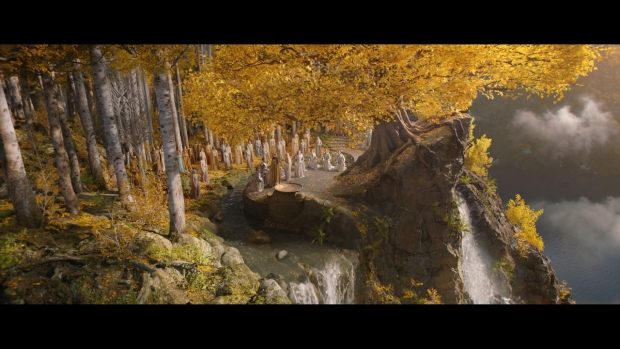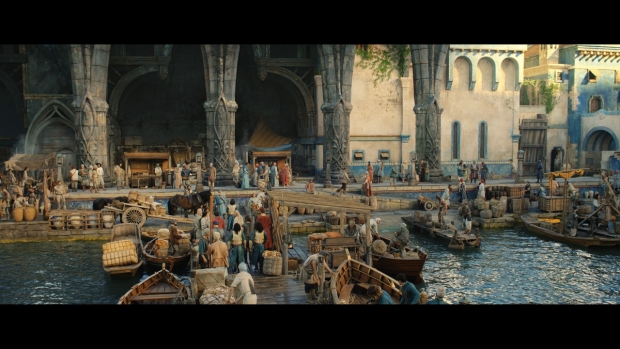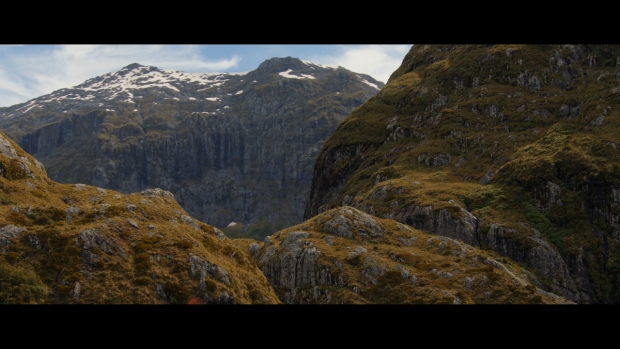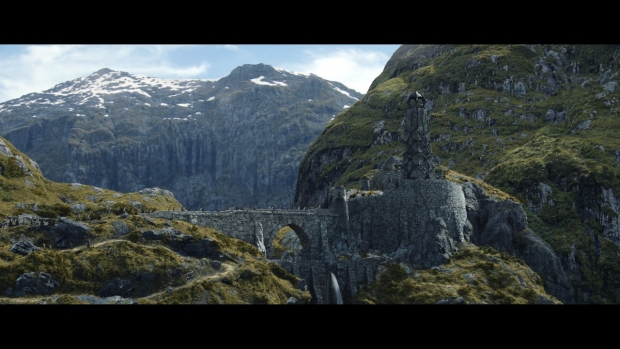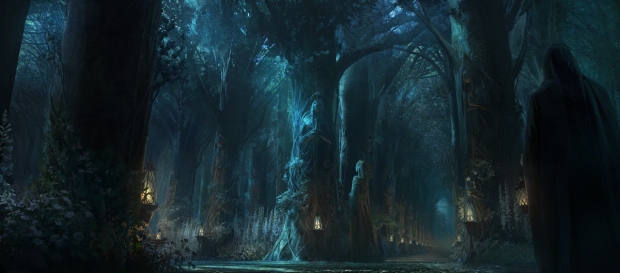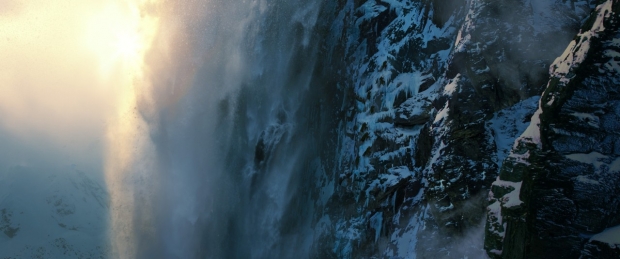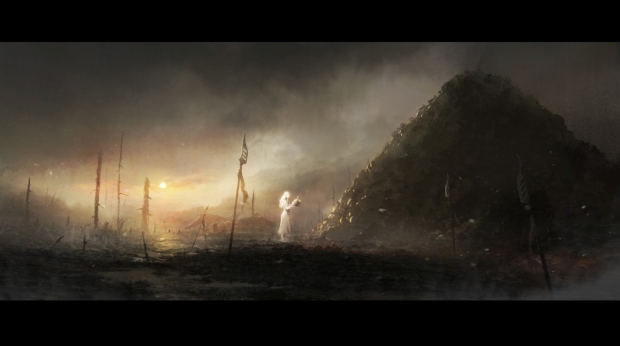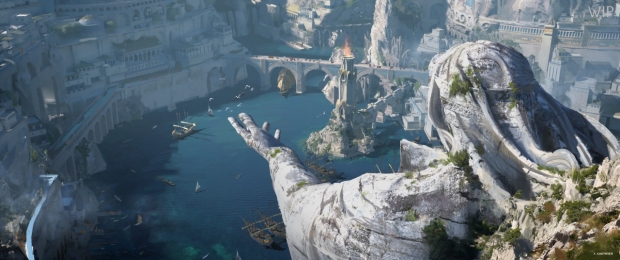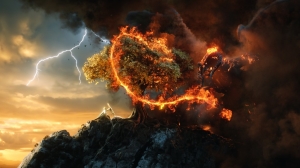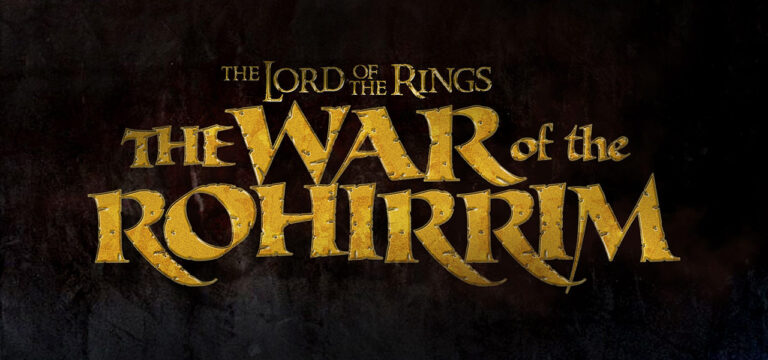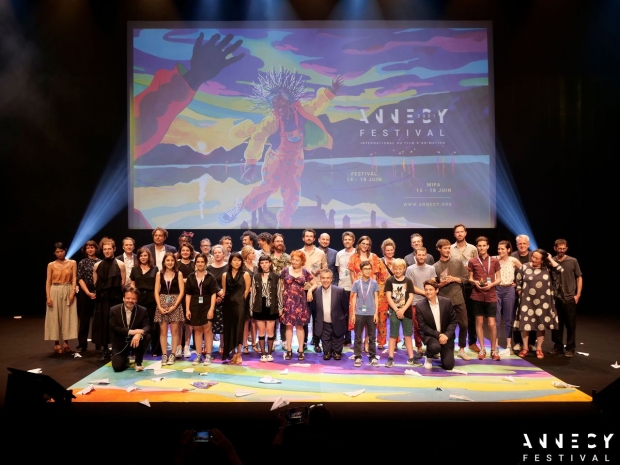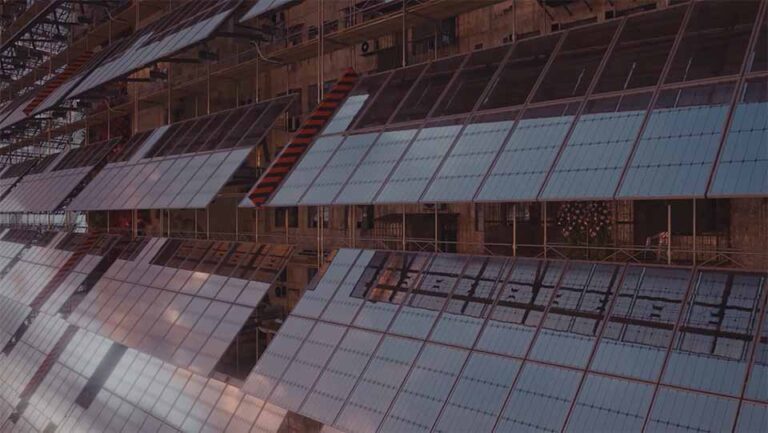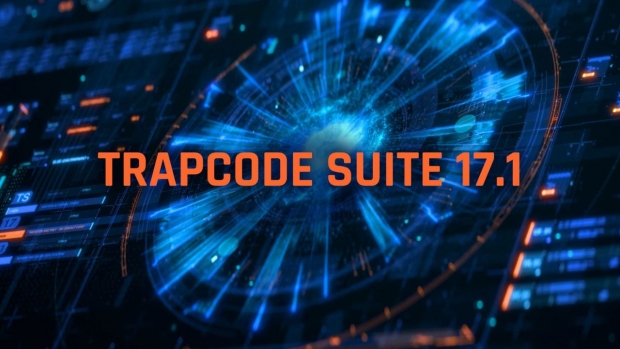Interior waterfalls were created in camera, as well as a wall of candles in a dining hall, by the special effects team led by Dean Clark. “We had never done something of that scale before,” states Clark. “The wall was about six and a half metres high and five meters wide with 192 individual flames. You could dial every flame up individually and turn them on and off automatically with its own fire extinguisher system above it because it was in the studio. That was quite a piece of work. At the opposite end of that scene, we had the lighting effect. Theoretically we were at one particular level of many stories, so we had a cascading waterfall against the lights. As the water was coming down it had a shimmer effect and all of that was done practically in camera. They were at one point scratching their heads about how they were going to achieve that lighting effect because the waterfall is supposed to be falling hundreds of meters down through all these levels of the set and there was obviously only one. That was all done in camera. It involved a lot of dialogue… and we had to have pumps running to circulate the water.”
Noting that Tolkien in quite specific when describing magic, Smith says, “There are aspects to that magic that are flashy sometimes, and aspects that he called ‘enchantment,’ which are visions, whether meant to be seen by somebody bad or entertain or give pleasure. But going into this we knew that all our magic needed to be rooted in the world. When you are seeing magic in our show, we endeavored to base it in a physical thing so that you’re seeing things happening in the environment and not just lights flashing.”
Creating scale throughout the show was the biggest challenge. “That is something that requires so many hands to touch and for everyone to understand it,” explains Ames. “It was like bringing a Tower of Babel and having everybody learn how to speak the same language. It involved not only art and technology but the will to actually do it and stay with it.”
Howe, responsible for the creature design of the Snow-Troll, notes, “I do not know exactly where my idea of trolls comes from, possibly partly from the Swedish illustrator John Bauer, and partly from other sources that have mentioned trolls in different legends and stories. A good deal obviously from Peter Jackson’s films where we had time to get to know trolls quite well. In the script, there is a Snow-Troll. All of that, like a soup you stir in that sense, is happening in my head and I’m thinking it needs to be identifiable as a troll but something a little different. That’s where I stop thinking. I did about six or seven sketches of Snow-Trolls.”
One of the concept artists on the project was John Howe, famous for illustrating the world of Tolkien, who along with Alan Lee played a major role in visualizing The Lord of the Rings trilogy directed Peter Jackson. “Tolkien was one of these wonderful authors who does not give you a huge amount of detail and physical description,” observes Howe. “He will describe the emotions of the characters when they are in a given situation but he doesn’t necessarily tell you exactly how many feet high a tower is or how big around it is.” Retro designing from the Third Age to the Second Age was not an option. “I don’t like the idea of taking existing elements from a fictional universe and then trying to go back in time in that same universe to imagine what it might have looked like,” Howe continues. “It’s very much done in science fiction. What I rather try to do is to get back as close as possible to the original spirit of the books or source material, try to imagine that keeping in mind that we are 2,000 odd years before and then move forward. If your intuition can be trusted, then you’ll end up in the same place.”
The show’s interesting and unique creatures are all rooted in reality. “Tons of design work based either on ancient animals or animals that are combinations of animals put together,” Ames says. “We have sea creatures and birds. There are some specific creatures that are only in Tolkien’s world that we have designed, and each one of them involved studies on movement, physical realities, shapes, designs, and physics. They’re insanely real and scary. There are some cool ones!”
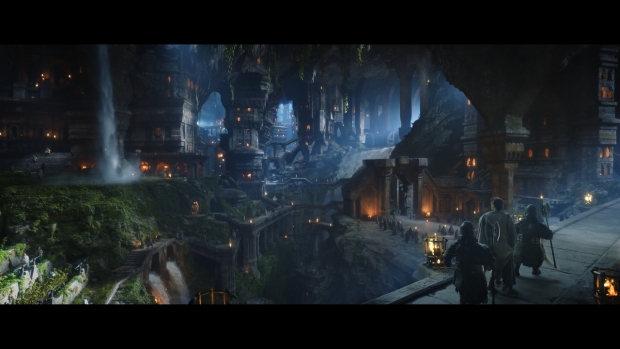
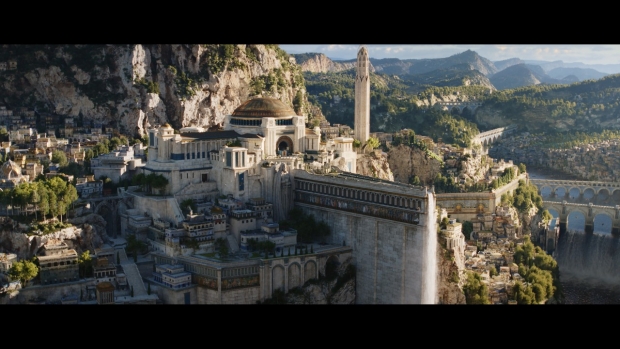

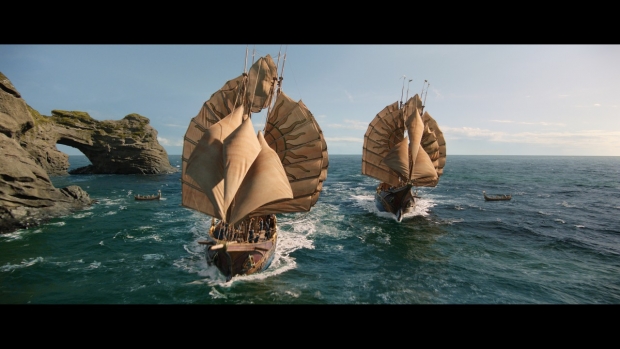
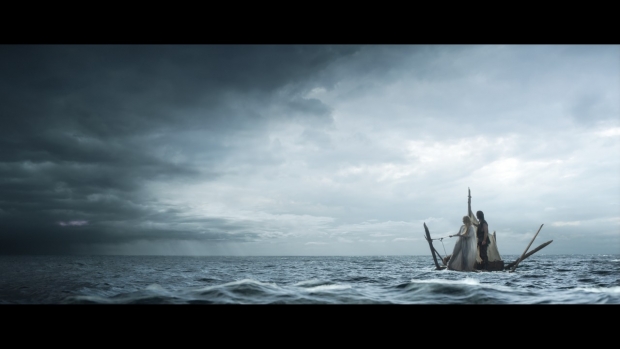
Not all the show’s characters are the same height, such as the diminutive Harfoots, predecessors of the Hobbits. “The Harfoots spend a lot of their time outdoors so the scale cue becomes either other characters that are not Harfoot or the world around them. The challenge there is things like rocks and trees are quite fractal in the way humans understand their scale. If I show you a picture of a tree you might have a sense of a range of how big it is but it could be plus or minus 30 percent. We had to follow the atmospherics rules and depth of field and placed little guides for the audience called scale anchors.”
Ruffling through the appendixes of The Lord of the Rings, one can get a sense of what the Second Age was like, though J.R.R. Tolkien never wrote a book dedicated to when the humans of Númenor were a dominate force in Middle-earth and elven and dwarven cultures flourished. Filling in the narrative gaps and chronicling the creation of the Rings by the Elves of Eregion and the rise of Sauron that led to the downfall that sets in motion the Third Age and the Fellowship of the Ring, is the hugely ambitious Prime Video production, The Lord of the Rings: The Rings of Power, from creators Patrick McKay and J.D. Payne. And in saying “huge,” I mean huge.
In another sequence, wax and snow resin were key ingredients for producing an ice wall. According to Clark, “It was six containers high and five containers wide with the real cast. We had breakaway bits for the actors to hit [with icepicks] and it was all dressed as if it was a frozen ice waterfall. That was a special moment.”
The Herculean effort has not gone unnoticed, as the fantasy series garnered seven nominations at the 2023 VES Awards for photoreal visual effects, the environment builds of Númenor and Khazud-dûm, effects simulations, compositing and lighting, and practical effects.
Though sets were constructed, the size and scope of Khazad-dûm makes the dwarven civilization inherently a visual effects world. “We tried to figure out ways that we could get interesting sets that were completely or 90 percent in camera and then figure out the right moments in the storytelling to open up into the wide vistas,” remarks Avery. “We agreed that an important characteristic to emphasize is that the dwarves revere the stone that they were working with. It wasn’t so much about forcing their will onto the stone but how to manipulate the beauty within the stone into their environment.”
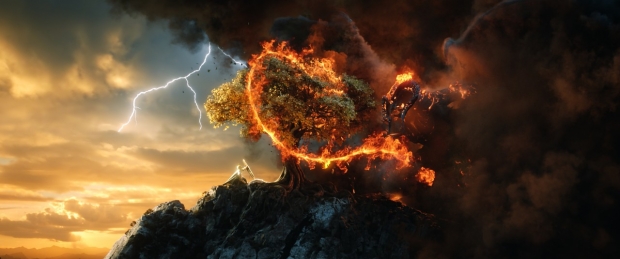
Trevor Hogg is a freelance video editor and writer best known for composing in-depth filmmaker and movie profiles for VFX Voice, Animation Magazine, and British Cinematographer.
Post-production was streamlined with a cloud-based infrastructure that utilized Amazon Web Services. “One of the first things that Ron Ames setup on the show was the expectation process,” remarks Visual Effects Supervisor Jason Smith. “All of our vendors had to be ready to share assets because we wanted this whole show to feel like one company. It helped to get these places to start using USD and standard shader models. It’s been that thing we’ve all wanted and have had to a degree with things like alembic out there. On this show we were able to get to a point where Wētā FX could handoff a digital double that Method Studios could then use in their shot.”
The colors, volumes, and textures of Númenor were inspired by late 19th and early 20th century painters specializing in depicting North Africa and the Middle East, as well as the city of Venice, which was the original inspiration for J.R.R. Tolkien. “In a country that has been around for centuries, it was important to layer different styles into the city, just like we see in our modern cities that have long endured, like Rome, London, or Istanbul,” states Avery. “I developed a history of Numenorean architecture, tracing how the humans and elves interacted and how that interplay affected the culture and forms. Numenoreans went from being thoroughly influenced by the elves to thoroughly rejecting them. But some humans still do revere the elves. All of that is reflected in the design.”


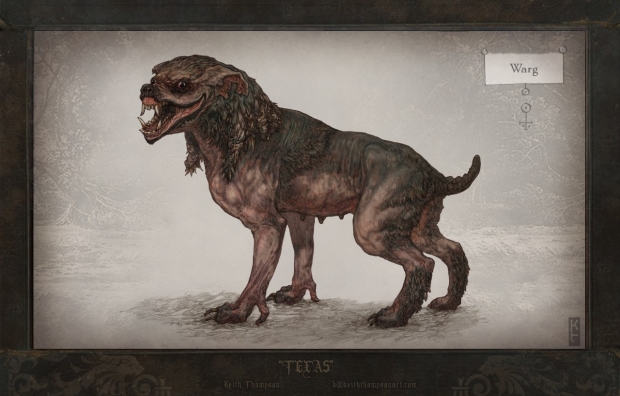
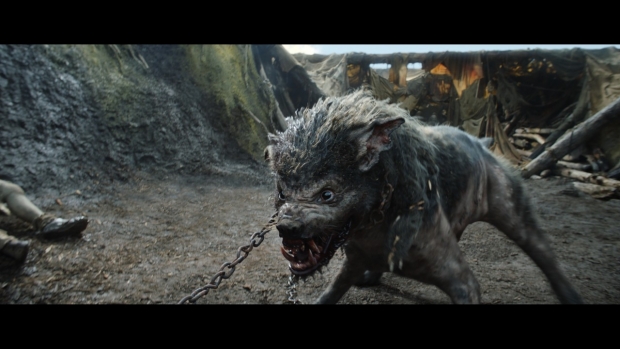

“I would like to note that in the two years I worked on this project, we generated around 38,000 pieces of concept art in some from or another – illustrations, digital models, videos, sketches, and paintings,” reveals Production Designer Ramsey Avery. “We had artists working in eight time zones across four continents, plus both islands of New Zealand. For almost 18 months, the sun never set on The Rings of Power Art Department.” The visual effects aspect was equally extensive. “There is not a shot in here that does not look like a feature film,” notes Co-Producer Ron Ames, who had to track 9,500 visual effects shots created by 20 vendors and 1,500 artists with 6,000 appearing in the final eight hours. “70 percent of the content has subtle or visible manipulation.”
